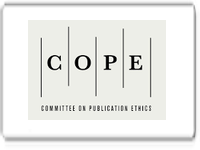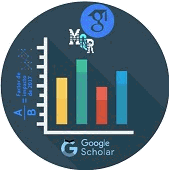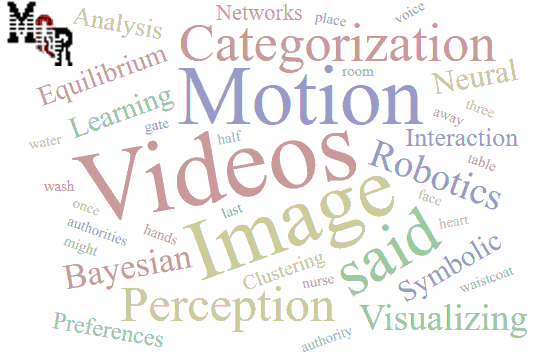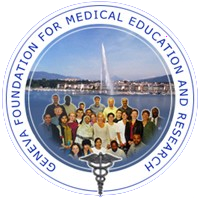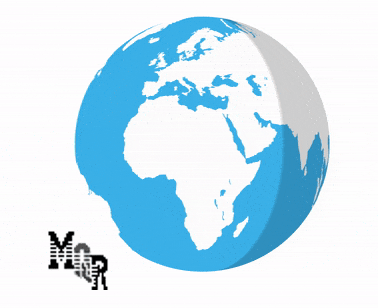Torsión testicular y su afección en la reproductividad
DOI:
https://doi.org/10.56048/MQR20225.7.3.2023.4006-4017Palabras clave:
Torsión testicular, fertilidad, consecuencias, tratamientos, calidad de vidaResumen
La torsión testicular (TT) es una emergencia pediátrica y urológica que tiene una incidencia de 4.5 por cada 100,000 hombres por año. Esta afección puede manifestarse en cualquier etapa de la vida, pero su incidencia es mayor en varones jóvenes, con una frecuencia bimodal en la población pediátrica, durante el primer año de vida, y entre los 13 y 16 años. A pesar de la existencia de tratamientos para la TT, se ha encontrado que esta afección deja ciertas secuelas en los testículos; el propósito principal de este estudio fue examinar la prevalencia de la TT sobre la reproductividad humana. Se consultaron las siguientes bases de datos de referencia: PubMed, Medline, Google Scholar y ScienceDirec; para escoger los artículos se tuvo en cuenta el idioma inglés y español y la disponibilidad del texto completo. Se analizaron estudios realizados en humanos, así como en animales modelo. Finalmente, se concluyó que después de la destorisón, los pacientes recuperan una función endócrina normal, el ADN de las células germinales está libre de daños, y el volumen y la calidad de esperma mejoran a largo plazo.
Descargas
Métricas
Cited
DOI: 10.56048![]()
Citas
Aggarwal, D., Parmar, K., Sharma, A. P., Tyagi, S., Kumar, S., Singh, S. K., et al. (2022). Long-term impact of testicular torsion and its salvage on semen parameters and gonadal function. Indian Journal of Urology, 38(2), 135. PMC8992720.
Aworanti, O. M., Hajduk, P., Devaney, D., Quinn, F., & Awadalla, S. (2017). Incidence of Low-Grade Testicular Injury in Orchidectomy Specimens Post-testicular Torsion. European Journal of Pediatric Surgery, 28(5), 433–438. http://www.thieme-connect.com/products/ejournals/html/10.1055/s-0037-1603091
Bahadir, G. B., Gollu, G., Ilkay, H., Bagriacik, U., Hasirci, N., & Bingol-Kologlu, M. (2022). LOCAL-IGF-1 and GH application IMPROVES germ cell histology, spermatogenesis, and fertility after experimental testicular torsion and detorsion. Journal of Pediatric Urology, 18(4), 410.e1-410.e8.
Bellurkar, A., Patwardhan, S., Patil, B., Kanbur, A., Jain, H., & Velhal, R. (2020). Role of Testicular Size as a Parameter for Predicting Infertility in Indian Males. Journal of Human Reproductive Sciences, 13(2), 114. https://www.ncbi.nlm.nih.gov/pmc/articles/PMC7394088/
Dias Filho, A. C., Cruz, P. R. C. da, Ribeiro, P. R. F., & Riccetto, C. L. Z. (2022). Testicular volume and Tanner stage: determinant factors for testicular torsion. Einstein (São Paulo). https://www.scielo.br/j/eins/a/R8dzpNH7VYPtkHn3bgHsxxJ/?lang=en
Emeka Chukwubuike, K., Kevin Emeka, C., Chukwuma Paulinus, I., & Nkiruka, O. (2022). Testicular Atrophy following Unilateral Herniotomy in Children: A Single Centre Experience. International Journal of Clinical Surgery, 1(2). https://www.researchgate.net/publication/365594602
Gielchinsky, I., Suraqui, E., Hidas, G., Zuaiter, M., Landau, E. H., Simon, A., et al. (2016). Pregnancy Rates after Testicular Torsion. Journal of Urology, 196(3), 852–855.
Greear, G. M., Romano, M. F., Katz, M. H., Munarriz, R., & Rague, J. T. (2021). Testicular torsion: Epidemiological risk factors for orchiectomy in pediatric and adult patients. International Journal of Impotence Research, 33(2), 184–190. https://www.nature.com/articles/s41443-020-0331-8
Hansen, A. H., Priskorn, L., Hansen, L. S., Carlsen, E., Joensen, U. N., Jacobsen, F. M., et al. (2023). Testicular torsion and subsequent testicular function in young men from the general population. Human Reproduction, 38(2), 216–224. https://dx.doi.org/10.1093/humrep/deac271
Holzman, S. A., Ahn, J. J., Baker, Z., Chuang, K. W., Copp, H. L., Davidson, J., et al. (2021). A multicenter study of acute testicular torsion in the time of COVID-19. Journal of Pediatric Urology, 17(4), 478.e1-478.e6.
Hutton, B., Salanti, G., Caldwell, D. M., Chaimani, A., Schmid, C. H., Cameron, C., et al. (2015). The PRISMA Extension Statement for Reporting of Systematic Reviews Incorporating Network Meta-analyses of Health Care Interventions: Checklist and Explanations. https://doi.org/10.7326/M14-2385. Annals of Internal Medicine, 162(11), 777–784. https://www.acpjournals.org/doi/10.7326/M14-2385
Ivanov, R., Pavlova, E., & Atanassova, N. (2023). Spermatozoa under Oxidative Stress: Risk or Benefit? Pathology and Anthropology with Museum Bulgarian Anat Soc Acta Morphol Anthropol, 30(2).
Katami, H., Suzuki, S., Fujii, T., Ueno, M., Tanaka, A., Ohta, K. I., et al. (2023). Genetic and histopathological analysis of spermatogenesis after short-term testicular torsion in rats. Pediatric Research. https://www.nature.com/articles/s41390-023-02638-7
Kaur, K. K., Allahbadia, G., & Singh, M. (2022). Optimizing Fertility in Pediatric Disorders that Possess the Potential of Reducing Fertility and Maximization of Avoidance of Development of Male Infertility in the Long Term: A Systematic Review. Mathews Journal of Gynecology and Obstetrics, 6(2), 1–14. https://doi.org/10.30654/MJGO.10021
Laher, A., Ragavan, S., Mehta, P., & Adam, A. (2020). Testicular torsion in the emergency room: A review of detection and management strategies. Open Access Emergency Medicine, 12, 237–246. http://doi.org/10.2147/OAEM.S236767
Mäkelä, E. P., Roine, R. P., & Taskinen, S. (2020). Paternity, erectile function, and health-related quality of life in patients operated for pediatric testicular torsion. Journal of Pediatric Urology, 16(1), 44.e1-44.e4.
Osemlak, P., Jȩdrzejewski, G., Woźniak, M., & Nachulewicz, P. (2021). Ultrasound evaluation of long-term outcome in boys operated on due to testicular torsion. Medicine (Baltimore), 100(21), E26057. PMC8154497.
Osemlak, P., Miszczuk, K., Jędrzejewski, G., Nachulewicz, P., Beń-Skowronek, I., & Brzozowska, A. (2021). Testicular torsion: Its effect on autoimmunisation, pituitary–testis axis, and correlation with primary gonadal dysfunction in boys. Pediatric Research, 90(6), 1193–1200. https://www.nature.com/articles/s41390-021-01382-0
Pogorelic, Z., Neumann, C., & Jukic, M. (2019). An unusual presentation of testicular torsion in children: A single-center retrospective study. Canadian Journal of Urology, 26(6), 10026–10032. https://www.researchgate.net/publication/338102188
Shih, H. J., Chang, C. Y., Huang, I. T., Tsai, P. S., Han, C. L., & Huang, C. J. (2021). Testicular torsion–detorsion causes dysfunction of mitochondrial oxidative phosphorylation. Andrology, 9(6), 1902–1910. https://onlinelibrary.wiley.com/doi/full/10.1111/andr.13068
Talebi, H., & Farahpour, M. R. (2019). Testicular torsion and reperfusion: Germ cell DNA damage and development. Andrologia, 51(5), e13243.
Tasci, A., Uguralp, S., Akatli, A. N., Arslan, A. K., & Karabulut, A. B. (2022). Long-term effects of orchiopexy and orchiectomy on the testes of rats with testicular torsion. Journal of Pediatric Urology, 18(3), 376.e1-376.e7.
Taskinen, S., Mäkelä, E., & Raivio, T. (2020). Effect of Pediatric Testicular Torsion on Testicular Function in the Short Term. Journal of Pediatric Surgery, 55(8), 1613–1615.
Törzsök, P., Steiner, C., Pallauf, M., Abenhardt, M., Milinovic, L., Plank, B., et al. (2022). Long-Term Follow-Up after Testicular Torsion: Prospective Evaluation of Endocrine and Exocrine Testicular Function, Fertility, Oxidative Stress and Erectile Function. Journal of Clinical Medicine, 11(21), 6507. https://www.mdpi.com/2077-0383/11/21/6507/html
Unsal, V., Kolukcu, E., Gevrek, F., & Firat, F. (2021). Sinapic acid reduces ischemia/reperfusion injury due to testicular torsion/detorsion in rats. Andrologia, 53(8), e14117. https://onlinelibrary.wiley.com/doi/full/10.1111/and.14117
Xia, Z., Hu, J., Han, L., Xia, Q., Shao, F., & Lin, X. (2020). Effect of unilateral testicular torsion on contralateral testis in a rat model. Pediatric Surgery International, 36(4), 529–536.
Yu, C. J., Zhao, J., Luo, J., Hong, Y. F., Zhao, T. X., & Wen, S. (2022). Long-term follow-up results of testicular torsion in children. Asian Journal of Andrology, 24(6), 653. PMC9809487.
Zhang, X., Zhang, J., Cai, Z., Wang, X., Lu, W., & Li, H. (2020). Effect of unilateral testicular torsion at different ages on male fertility. Journal of Urology, 48(4). https://doi.org/10.1177/0300060520918792
Publicado
Cómo citar
Número
Sección
Licencia
Derechos de autor 2023 MQRInvestigar

Esta obra está bajo una licencia internacional Creative Commons Atribución 4.0.
Los autores se comprometen a respetar la información académica de otros autores, y a ceder los derechos de autor a la Revista MQRInvestigar, para que el artículo pueda ser editado, publicado y distribuido. El contenido de los artículos científicos y de las publicaciones que aparecen en la revista es responsabilidad exclusiva de sus autores. La distribución de los artículos publicados se realiza bajo una licencia 


















